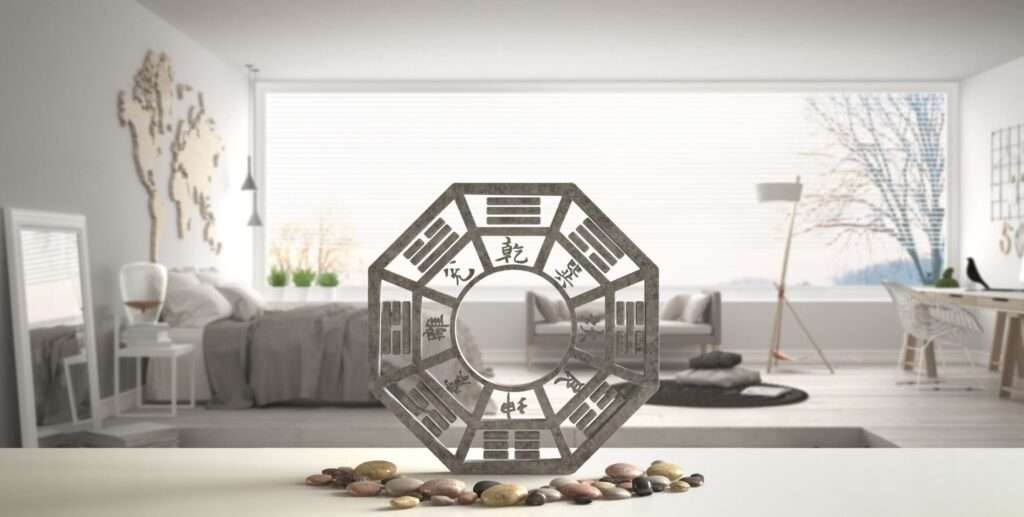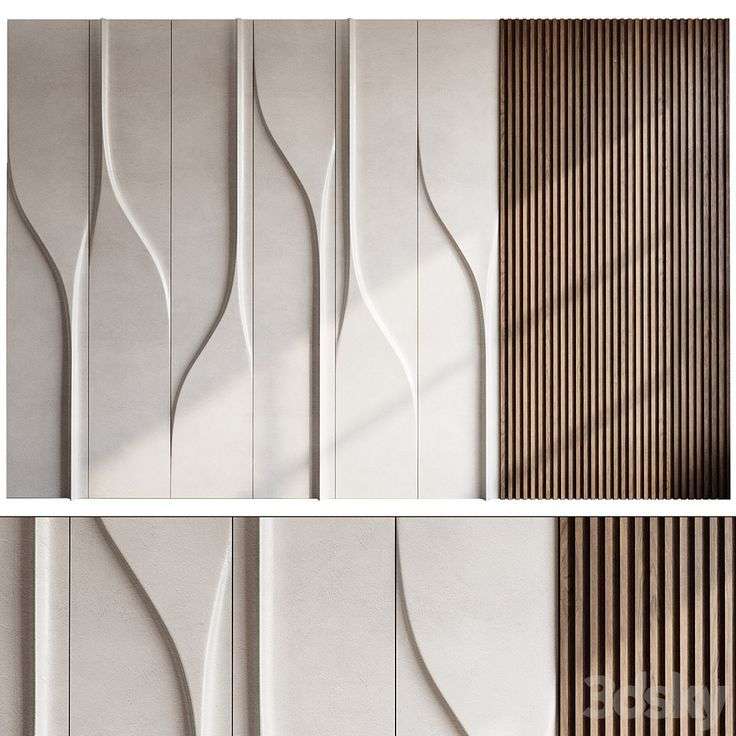Feng Shui is an ancient Chinese practice that aims to create balance and harmony in an environment by understanding the flow of energy, or “Chi.” While it’s often associated with spiritual or metaphysical concepts, there is a science behind Feng Shui that emphasizes the importance of space, placement, and design in our physical surroundings. At Scale & Structure, we believe that incorporating Feng Shui principles into interior design can not only enhance the aesthetics of your home but also improve your well-being, productivity, and peace of mind. In this blog, we’ll explore the science behind Feng Shui and how it can transform your living space.

What is Feng Shui?
Feng Shui, which literally translates to “wind and water,” is based on the idea that the arrangement of your surroundings affects the flow of energy in your life. The goal of Feng Shui is to create a space where the energy flows freely and positively, influencing health, relationships, wealth, and overall well-being. Feng Shui involves careful attention to furniture placement, the use of colors, the materials in your home, and the flow of air and light.
The Science of Energy (Chi)
In Feng Shui, energy, or “Chi,” is considered the fundamental force that flows through all living things. The placement of furniture and the design of a space can influence how Chi flows, either encouraging it to move smoothly or creating blockages that affect the atmosphere. The science behind Feng Shui suggests that our surroundings can influence our mood, stress levels, and mental clarity, making it important to create environments that support positive energy.
Scientific Basis:
- Neuroscience: Studies in neuroscience suggest that cluttered or chaotic environments can lead to increased stress and reduced focus. On the other hand, well-organized spaces with harmonious design promote calmness and improved cognitive function.
- Biophilic Design: Feng Shui’s emphasis on natural elements such as plants, water, and wood connects with biophilic design, which is backed by scientific research that shows nature-inspired spaces can reduce stress and improve overall well-being.
- Light and Color Psychology: Color and lighting are key components of Feng Shui. Colors and light levels can influence mood and emotions, which is why choosing the right colors in the right places is crucial for creating a balanced atmosphere.
Key Feng Shui Principles for Interior Design
Here’s how you can apply Feng Shui principles in your home to create a more balanced, harmonious living space:
1. The Bagua Map: Mapping Your Space’s Energy Zones
The Bagua Map is a tool used in Feng Shui to divide your space into nine areas, each representing different aspects of life, such as wealth, health, love, and career. By understanding how the Bagua Map works, you can arrange your home’s layout to enhance certain areas of your life.
How to use it:
- Start by determining the orientation of your home and aligning the Bagua map with the floor plan.
- Focus on enhancing the areas of the Bagua that align with your current needs. For example, if you’re looking to improve your career, focus on the area of your home that corresponds to “Career” and “Life Path” on the map.
Scale & Structure Tip: For example, adding plants or a water feature to the “Wealth” area of your home can enhance prosperity, while placing romantic artwork in the “Love and Relationships” area can strengthen your connections with others.
2. The Five Elements: Balancing Wood, Fire, Earth, Metal, and Water
Feng Shui is built on the concept of five natural elements that must be balanced to support healthy Chi. These elements—wood, fire, earth, metal, and water—correspond to different aspects of life and should be incorporated thoughtfully into your interior design.
How to incorporate the five elements:
- Wood: Use plants, wooden furniture, and green colors to represent growth and vitality.
- Fire: Candles, lighting, and warm colors like red, orange, and purple represent passion, energy, and transformation.
- Earth: Earthy tones, ceramic objects, and stone surfaces help promote stability and nourishment.
- Metal: Metal accents in silver, gold, or brass can encourage clarity, focus, and precision.
- Water: Water elements like fountains, aquariums, or blue colors bring flow, calm, and prosperity.
Scale & Structure Tip: By carefully integrating these elements into your design, you can ensure that the energy in your home remains balanced and vibrant.
3. The Importance of Clutter-Free Spaces
Clutter is one of the biggest obstacles to positive energy flow in Feng Shui. The scientific reason behind this principle is that clutter contributes to stress and mental fatigue, which can drain your energy. When you organize your home, you allow Chi to flow freely, creating a more harmonious environment.
How to declutter:
- Keep countertops, desks, and living areas tidy and organized.
- Only keep items that are meaningful or functional. Consider donating or discarding things that no longer serve you.
- Pay special attention to high-traffic areas like entryways and hallways to ensure they are free of obstacles.
Scale & Structure Tip: Use smart storage solutions like multi-functional furniture or hidden compartments to keep spaces organized while maintaining a stylish aesthetic.
4. Furniture Placement: Maximizing Chi Flow
The placement of furniture is crucial to how energy flows through your home. Feng Shui suggests that furniture should be arranged to allow for the free flow of energy, and the positioning of key pieces can either invite or block Chi.
How to arrange furniture:
- In the living room, place seating in a way that encourages conversation and connection, ensuring that everyone faces the center of the room without being obstructed.
- In the bedroom, position the bed in a “command position,” where you can see the door without being directly in line with it. This positioning is believed to give you a sense of control and safety.
- Avoid placing furniture in direct lines with doors or windows, as this can cause energy to flow too quickly, creating instability.
Scale & Structure Tip: Create a sense of balance by using symmetry and proportion in your furniture placement. Keep pathways clear and ensure that each room has a sense of openness and ease.
5. Natural Light and Ventilation
One of the most important principles in Feng Shui is the use of natural light and airflow to encourage the movement of Chi. Fresh air and sunlight help rejuvenate the energy in your space, creating a healthier and more vibrant environment.
How to improve light and airflow:
- Open curtains or blinds during the day to let in as much natural light as possible.
- Use mirrors strategically to reflect light into darker corners of the room.
- Ensure that windows are clean and allow for proper ventilation, promoting the free flow of energy.
Scale & Structure Tip: If your home doesn’t receive much natural light, consider using light-colored walls and reflective surfaces to amplify the available light.
6. Color in Feng Shui: Choosing the Right Palette
Color plays a significant role in Feng Shui, as it can directly influence the energy in a room. Different colors correspond to specific elements and can enhance various areas of your life.
How to use color in Feng Shui:
- Red: Activates passion and energy; best for areas related to fame and reputation.
- Yellow: Promotes joy and stability; great for kitchens and living rooms.
- Blue: Calming and restorative; ideal for bedrooms and bathrooms.
- Green: Represents growth and health; perfect for living spaces or home offices.
- White: Represents purity and clarity; great for creating a clean and serene atmosphere.
Scale & Structure Tip: For maximum effect, use color to accentuate the Feng Shui elements in each area of your home. A carefully chosen color palette can help enhance the desired energy in each room.
Conclusion: Harmonize Your Space with Feng Shui
Feng Shui offers a holistic approach to interior design that goes beyond aesthetics. By understanding the science behind it and integrating its principles, you can create a space that not only looks beautiful but also supports your well-being. At Scale & Structure, we are passionate about designing spaces that promote balance, health, and positive energy. Whether you’re redecorating or embarking on a major renovation, consider applying Feng Shui principles to enhance the energy flow and overall harmony of your home.



